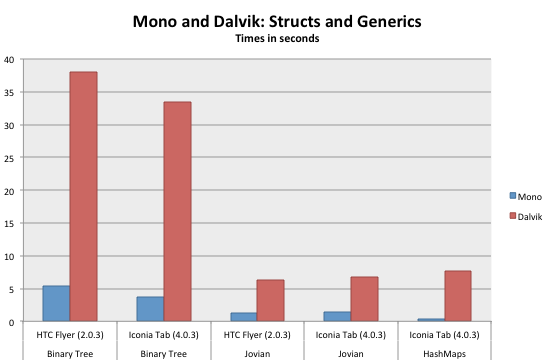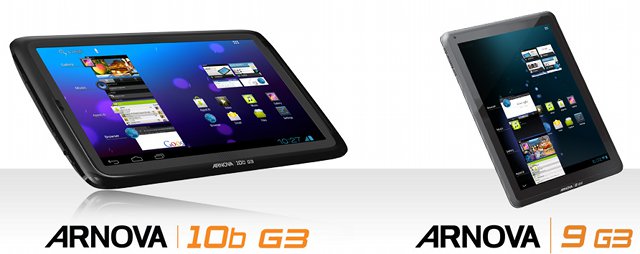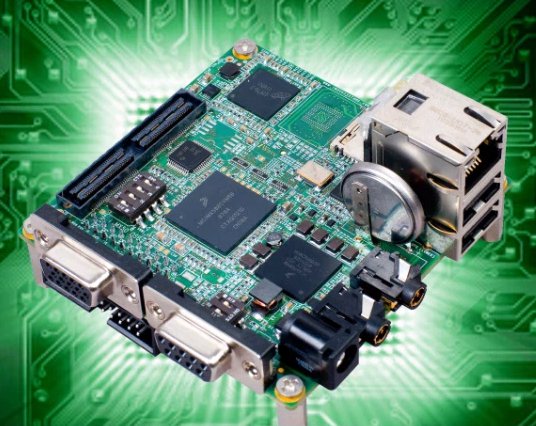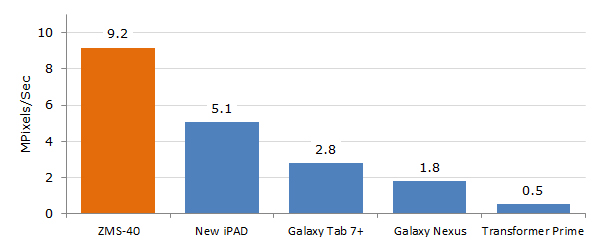Xamarin has been providing Mono, a C# framework that can work on Linux for some years, and more recently they have also launched Mono for Android and iOS so that you can write or re-use existing C# application on the most common samrtphone platforms. But their latest project “XobotOS Research Project” goes much further, as they have entirely re-written Android Dalvik engine based on Java with C#. Considering the million of lines of code in Android, they have found a tool to automatize the Java to C# conversion. This tool is an Eclipse plugin called is Sharpen, and Xamarin has made further improvements to Sharpen which are available on Github. They already have ported Android 2.x and Android 4.0 to C#. If you wonder why they would do that, look at the “benchmarks” below showing Mono vs. Dalvik implementation of Android for binary tree, jovian and hashtags. Since the company […]
Android NDK Revision 8 Adds MIPS Architecture Support
Google has just released Android Native Development Kit Revision 8, the Android SDK that allows developers to reuse C/C++ code. This version adds support for MIPS architecture and fixes a few bugs. Here’s the changelog of the new features and most important bug fixes: Added support for the MIPS ABI, which allows you to generate machine code that runs on compatible MIPS-based Android devices. Major features for MIPS include MIPS-specific toolchains, system headers, libraries and debugging support. For more details regarding MIPS support, see docs/CPU-MIPS.htmlin the NDK package. Fixed a typo in GAbi++ implementation. Fixed an issue in which make-standalone-toolchain.sh fails to copy libsupc++.*. You can download Android NDK version 8 to develop native apps for MIPS or take advantage of the new bug fixes. Previously, MIPS provided the Android NDK on their own website, but this version might be phased out, as MIPS support is now part of the […]
Archos Arnova G3 Tablets: Arnova 10b G3 and Arnova 9 G3
Archos has announced (actually just listed them on their website) the third generation low cost Arnova tablets based on Rockchip RK2918 (Cortex A8 @ 1GHz) with 1 GB RAM and running Android 4.0 (ICS) with Arnova 10b G3 and Arnova 9 G3 Here are the specifications of the devices: CPU • Rockchip RK2918 (Cortex A8) @ 1 GHz System Memory • 1GB RAM Operating system • ANDROID 4.0 Capacity • Flash memory: 8 GB or 4 GB • Extendable via micro SDHC Slot Display characteristics • Arnova 10b G3 – 10.1” Resistive Dual Touch screen, TFT LCD (Resolution : 1024 x 600) • Arnova 9 G3 – 9.7″ Capacitive 5 points MultiTouch Screen with IPS Technology (Resolution: 1024 x 768) Video Playback • H.264 up to 1080p resolution – 30 fps • MPEG-4– 30 fps • Container formats: .avi .mp4 ,mkv, .mov, and .flv Audio Playback • MP3, WAV, APE, […]
Linaro 12.04 Release with Kernel 3.4 and Android 4.0.4
Linaro has just released version 12.04 based on Linux Kernel 3.4-rc3 and Android 4.0.4_r1.1. This release already provides Ubuntu 12.04 LTS images for Pandaboard, Snowball, Origen and Versatile Express, and all community builds (nano, ALIP…) are based on Ubuntu Precise Pangolin as well. This should provide significant performance boosted compared to Ubuntu 11.10 thanks to hard-float support and other optimization (See Phoronix Benchmarks). A lot of work since to have gone into big.LITTLE implementation, HTML5 is now supported in Firefox, and it seems Linaro is still working on ARMv6 as they provided VP8 optimizations and improved the toolchain for this architecture. Here are the highlights of the release: Android Finished Snowball Multimedia enablement. Updated all builds to AOSP ICS 4.0.4_r1.1. Switched all builds to 4.7. Updated base toolchain components MPFR and GMP. Ported htop to Android. Ported stressapptest to Android for big.LITTLE Testing. Implemented and ran weekly big.LITTLE tests. Integrated […]
Olimex A13-OLinuXino Could Become a Proper Raspberry Pi Alternative
Olimex recently announced they produced the first 10 prototypes of iMX233-OLinuXino Development Board, a low-end Linux development board that will cost 30 Euros, with specifications inferior to the Raspberry Pi. They have now announced their plan to design A13-OLinuxXino development board based on the new AllWinner A13 chipset, a strip down version of AllWinner A10 without HDMI nor SATA. Thanks to the low cost of AllWinner A13 (5 USD for very large orders / 10 USD in smaller quantities), Olimex plans to sell the new A13-OLinuxXino board for the same price as the iMX233-OLinuXino but with a faster 1GHz Cortex A8 processor and 256 or 512 MB RAM. I assume their will be 2 versions as well, the MINI for 29,95 Euros and the MAXI version with 2 more USB 2.0 host ports and 10/100Mbit Ethernet for 44.95 Euros. This board could be a very interesting alternative to the Raspberry […]
199 USD iWave Systems Freescale i.MX508 RainboW-G13S Development Board
iWave Systems has just uploaded a new video of its new Freescale .i.MX508 low cost development board RainboW-G13S Quick Start Board, an alternative to the original Freescale i.MX53 QSB. This board targets the development of eReaders, industrial kiosks, home/industrial/office automation, portable medical devices and appliance control applications. Here are the specifications of this development board: CPU – Freescale i.MX508 processor (Cortex A8) @ 800MHz System Memory – 256MB LPDDR2 Storage – 2/4 GB micro SD card loaded with boot code and Linux, 4MB SPI Flash (optional) and 8 GB eMMC (optional) Connectivity – 10/100Mbps Ethernet USB – Micro USB 2.0 Device port, 2x USB 2.0 Host Type A port Standard SD port for SDIO expansions Video Output – VGA Audio – Audio IN & OUT port Debug Ports – DB9 Debug Serial port & JTAG connector Expansion connector port for EPD & LCD expansion. The company provides Board Support Packages […]
Ziilabs MandelMark Benchmark Shows ZMS-40 GPU Compute Performance is 18 Times Faster than Nvidia Tegra 3
Ziilabs released comparative GPU compute benchmark results for its ZMS-40 stem cells processor and made available its MandelMark floating point benchmark for Android 4.0 as an apk file. Since Ziilabs is using its own benchmark tool, which they released as a binary but did not open source, the results should be taken with a grain of salt. GPU Compute (aka GPGPU – General Purpose computing on GPU) is a technique to use the GPU to perform complex calculations usually performed by the CPU. MandelMark benchmark visualizes the solutions to the Mandelbrot to measure the floating point performance of mobile processors. Ziilabs compared their ZMS-40 Quad Core Cortex A9 processor with 96 stemcell cores to the following competitors: IPAD 3 – Apple A5X processor with a quad-core PowerVR SGX543MP4 GPU Galaxy Tab 7+ – Samsung Exynos 4210 processor with a quad-core ARM Mali-400 GPU Galaxy Nexus – TI OMAP 4460 processor […]
Sunlike UMPC-1021: 85 USD AllWinner A10 Based 10.2″ Android 4.0 Netbook
Sunlike, a Shenzhen-based manufacturer, showcased their UMPC-1021 Android 4.0 netbook at the China sourcing fair last week. This netbook is powered by an AllWinner A10 (ARM Cortex A8) processor with 1GB RAM and 4GB flash and features a 10.2″ LCD display (but not a touchscreen), a 1.3MP front camera and a 2100mAh battery. Here are the specifications of Sunlike UMPC-1021 Android netbook. CPU AllWinner A10 @ 1.2 GHz Operation system Android 4.0 ICS or WinCE Memory 1G RAM Storage Device 2/4/8G NAND Flash LCD 10.2″ PANEL 16:9 wide screen. 1024×600 Resolution LAN 10/100M Ethernet WIFI 802.11b/g USB Port 3x USB 2.0 Host External Storage SD Card Slot Build-in camera 1.3 MPixel Audio Build-in stereo speaker Microphone Dimensions 280 x 189 x 25 mm Battery 7.4V 2100 mAh – 3 to 5 hours usage The company also explains that this netbook can be used for 5 hours with the “default” 2,100 mAh battery, but they can extend that to 10 hours with a 4,000 mAh battery. Watch the video below to see […]








